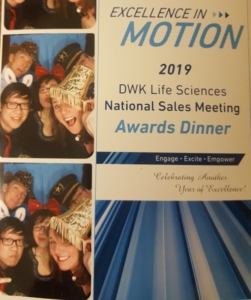Purchasing in the business–to–business environment has changed in the last few years. Buyers are more critical, more informed, and more careful with their spends. Their focused budgets have eroded sales, which has caused sales organizations to become hyper vigilant on lagging indicators like revenue, sales-to-quota, and close ratios as a measure of success. However, lagging indicators only allow for post–mortem analysis.
Conversely, leading indicators allow for course correction before targets are missed. Here are three leading indicators that can help you reach your revenue goals.
- Opportunity Pipeline Value – This is a good, early quantitative indicator. This ratio should mirror your close ratio. Do you close 1 out of every 3 opportunities? Then you need 3 times the dollar amount in qualified opportunities to make your annual quota plan.
- Meeting Summary – This is the best qualitative measure I know. A meeting summary is a written communication between buyer and seller. When this is a customer-facing document, then important analysis can happen. Managers can see whether this is a qualified opportunity or not and if the sales person is spending the appropriate amount of time to move the sale along. Also, sales people tend not to exaggerate the size of the opportunity when it is discussed and reflected back to the customer, which makes the pipeline totals more accurate.
- Implementation Plan – This is another auditable, qualitative checkpoint. A clearly communicated plan between buyer and seller, crafted while the opportunity is still being developed, shows commitment on both sides. First of all, it’s auditable. A manager can look at the plan and offer steps that have been missed and strategies to ensure closing. Also, the probability to close increases to 80% when the customer is involved with an implementation plan, thus making the opportunity pipeline numbers more reliable and concrete.
Above all leading indicators, it is the auditable documents that track the communication between buyer and seller that provide the most accurate lens for the “crystal ball” that we call sales forecasting. Let us help your organization create auditable documents and an improved focus on leading indicators.



 There’s no set formula or silver bullet for sales success. If there were, sales would be a lot easier! But neither should sales be attempted in a haphazard manner. A set sales process can help to shorten sales cycles and improve productivity, while also giving managers insight into their salespeople’s performance.
There’s no set formula or silver bullet for sales success. If there were, sales would be a lot easier! But neither should sales be attempted in a haphazard manner. A set sales process can help to shorten sales cycles and improve productivity, while also giving managers insight into their salespeople’s performance. 
 In the song “Cheaper to Keep Her”, the words spell out the trials and tribulations of whether to stay in a bad relationship or make the painful decision to cut ties.
In the song “Cheaper to Keep Her”, the words spell out the trials and tribulations of whether to stay in a bad relationship or make the painful decision to cut ties.